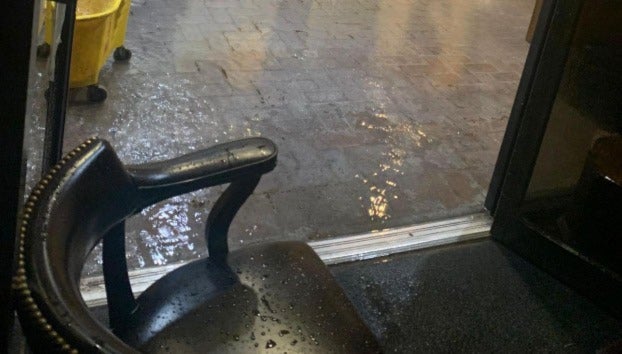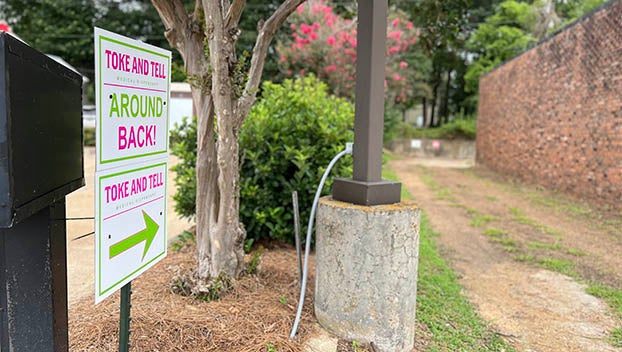Locals in energy industry reeling from low oil prices
Published 12:05 am Sunday, December 6, 2015
NATCHEZ — Being able to fill up the gas tank for $30 may feel pretty good at the pump, but for many in the Miss-Lou, that good feeling comes with a punch in the gut.
“It is a two-edged sword,” Natchez Inc. Executive Director Chandler Russ said.
“You have the consumers who benefit with low gas and fuel prices, but for our region in particular, which have such a huge oil services and drilling production in both traditional and non-traditional plays, sustained low prices is not, from a job creation standpoint, good for our region.”
When domestic oil prices fell from their two-year high of $105.86 a barrel in June 2014 to $48.65 a barrel in January, local industry observers said it was only a matter of time before the market corrected itself. By May, the price had moved back to approximately $60, but since then the market has been in a steady slump and the price stands at just under $40 a barrel.
Those prices mean many in the energy industry are having to face real reductions in work that once guaranteed a livable income for someone who was willing to put in the effort.
“It has definitely slowed us down — there are a lot fewer wells being drilled because of it,” said Frank Davis of Frank Davis Exploration of Natchez. “I think a lot of people are taking the attitude that we can wait and see if things can get better, because the service businesses haven’t come down with the cost of drilling a well.”
The markets force producers to walk a fine line, Russ said, and right now they’re well on the losing side of it.
“The non-traditional shale plays have a higher premium on what it costs before you see a profit, while the traditional plays — which have been our bedrock in the oil and gas community for 80 to 90 years — doesn’t have those big pressure points,” he said.
“But they are still not where they need to be before we start seeing a significant amount of rigs being out there and working.”
For traditional production, that would come to $60 a barrel, while the non-traditional operations would need between $70 and $85 a barrel depending on their positions and drilling costs, Russ said.
Smith-Mason & Co. founder Randy Smith started his oilfield safety training company when oil was $100 a barrel, 1,600 U.S. oilrigs were active and the non-traditional Tuscaloosa Marine Shale play in Southwest Mississippi was poised to boom.
Now there are approximately 575 oilrigs active in the U.S. and the Tuscaloosa Marine Shale is all but stalled out.
“Where maybe the companies had all the rigs working, there would be maybe 30,000 to 40,000 people to train, but going down to 500 rigs, there are a lot less people to train,” Smith said.
Smith-Mason has been able to offset the domestic slowdown by setting up a school in Saudi Arabia — “Everybody is working out there, so we have to go out there and train there,” he said — but others have not been as lucky.
“You are seeing cutbacks and layoffs within the oilfield and within that industry altogether,” Russ said. “There are significant numbers in the oilfield community, all the way through — not just in exploration, but in our service market, too.”
Russ said the number those impacted across the industry in the region, “anywhere from land men to drilling operators and service, is several hundred (people) across the board.”
Part of the problem is the U.S. does not export domestic oil — and in fact is legally barred from doing so — while the oil producers in the Middle East are content to operate at higher levels of production with lower per barrel profits, Smith said.
Most domestic production can’t be profitable when the international market is flooded.
“It is all oversupply,” he said. “You see companies like Callon working in the Permian Basin and Eagleford Shale in Texas and able to make money because their drilling costs there are really low there, but in other places that’s just not the case.”
And it looks like relief from the international markets might be a while coming yet. The OPEC oil cartel — a group of oil producing countries in the Middle East — met Friday to discuss cutting production only to leave things as they are, a move analysts have said will likely push prices further down.
“We have gotten out of trying to predict world markets a long time ago,” Russ said. “With some of the disarray in the world, you would think that you would have higher prices, but we don’t foresee or have any idea when it is coming back up.”
While times are tough now, Russ said the Miss-Lou’s oil industry has been around long enough to know that you can pull through a down market — including the oil bust of the 1980s and a turn in the 1990s that saw oil fall to $16 a barrel — if you hold out.
“We know that the industry has its ups and downs, and it is going to ebb and flow, and our area has a long history in that business so that they are accustomed to it,” he said.
“The area has been doing oil and gas for 90 years, and between there they have seen the best of the best and the worst of the worst, and we are somewhere in the middle of that right now.”






